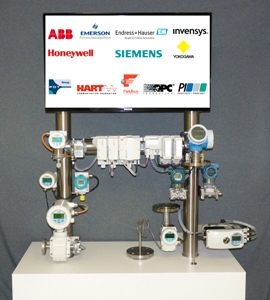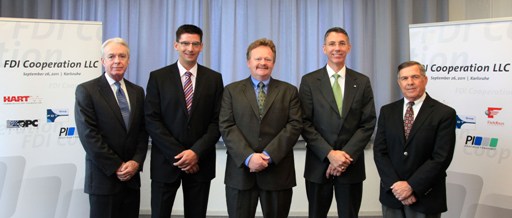Global automation groups form single solution for device integration
The five major automation foundations, including the FDT Group, Fieldbus Foundation, HART Communication Foundation, PROFIBUS & PROFINET International, and OPC Foundation have developed a single common solution for field device integration (FDI), the groups said on Tuesday.
 These foundations have combined their efforts to form a joint company named FDI Cooperation, LLC (a limited liability company under US law).
These foundations have combined their efforts to form a joint company named FDI Cooperation, LLC (a limited liability company under US law).
FDI is headed by a board of managers, which is composed of the representatives of the involved organizations, as well as managers of global automation suppliers including ABB, Emerson, Endress+Hauser, Honeywell, Invensys, Siemens, and Yokogawa.
“FDI marks an unprecedented level of cooperation among suppliers and foundations to achieve a single integration technology for the benefit of end users”, said Achim Laubenstein, managing director of the FDI Cooperation.
FDI’s mandate is to develop a single technology for the management of information that comes from all intelligent devices throughout all areas of the plant.
The mission of FDI is to do the following, the groups said:
- Complete the standardization of FDI under the IEC (International Electrotechnical Commission).
- Manage the FDI Specification.
- Finalize the FDI tool kits for system and device manufacturers.
- Promote and provide high quality technology support for FDI, independent of and common for the respective communication protocols.
- Preserve end users’ and automation manufacturers’ investments by providing state-of-the-art technology that is fully backward compatible.
- Ensure stability, interoperability and compatibility of FDI-based products.
Why FDI?
Efficient and economically viable device integration requires multiprotocol, standardized technology that makes device information available across systems and applications from different manufacturers.
In the past, the development of such uniform technology was inhibited by too many different interests from organizations and automation manufacturers, resulting in the creation of disparate technical solutions.
The current solutions - EDDL (electronic device description language) in various formats and FDT (field device technology) - have their strengths and weaknesses, but also overlap to a large extent and thus lead to additional expense for users and manufacturers.
FDI technology will provide a very scalable solution that users can deploy in applications ranging from simple configuration to complex management of the most sophisticated field devices for the various tasks associated with all phases of their lifecycle, from configuration, commissioning, and diagnostics to calibration.
This makes different solutions for different devices obsolete. FDI is a truly unified solution that addresses end user requirements across the spectrum, the groups said.
Harmonization of EDDL
FOUNDATION fieldbus, PROFIBUS, and HART all use EDDL as a core technology, but they all use slightly different variations of the technology. The FDI Cooperation has harmonized EDDL across communication protocols.
This enables FDI to provide single cross protocol FDI Design and Test Tools including a common EDD Interpreter.
EDDL harmonization is now complete, and this greatly facilitates the second step - harmonization between EDDL and FDT technologies. This is the ultimate goal of FDI.
Concept Proven
In November 2011 at the NAMUR meeting in Germany, FDI device packages were used for the first time to integrate FOUNDATION Fieldbus, HART, and PROFIBUS field devices from various manufacturers within an ABB process control system.
Typical applications, such as parameter assignment, configuration, diagnostics, and maintenance, were demonstrated.
The purpose of the working prototype was to verify the FDI concepts, apply the standard host components in a system context, and demonstrate FDI functionality. This successful demonstration led to the following steps.
Next Steps
• First draft of the FDI specifications was published at the end of 2011.
• Completion of Conformance test concepts to occur mid-2012.
• Completion of the validation and release of the FDI specifications for member review within the foundations (mid-2012).
• Completion of the FDI standard host components, such as EDD Engine and User Interface (UI) Engine by the FDI Cooperation (end of 2012).
End User Benefits
The primary benefit of FDI is that end users with either an FDT or EDDL-based host will have a single source solution for managing the wealth of functionality and information from intelligent field devices, the groups said.
Users will no longer need to manage disparate device descriptions, which will reduce the costs associated with maintaining assets in the field.
FDI combines the advantages of FDT with those of EDDL in a single, scalable solution.
FDI is applicable to a wide range of tasks over the entire lifecycle of the plant for both simple and the most complex devices, including configuration, commissioning, remote diagnostics, calibration, and more. 






Comments